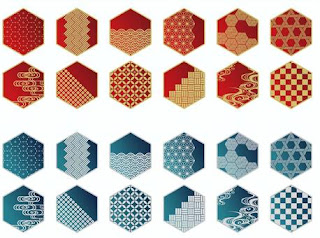Hand-dyed Edo komon, dyed using the same techniques as those used since the Edo period (1603 - 1868).
Edo komon kimono can enjoy a change of atmosphere depending on how it is coordinated with obi belt, and is a widely useful kimono for a variety of occasions, from formal dress and tea ceremonies to small meals.
The variety of patterns, from traditional patterns with a rustic feel to playful patterns that express the wearer's personality, is part of the fun of choosing.
The same pattern can give a different impressions depending on the colour, as in the saying "Edo komon is worn by its colour". The colours that can be both chic and modern are also attractive.
During the period, fine and beautiful Edo komon will be on display, offering a wide selection of classic traditional patterns, playful patterns and fresh shades for summer.
History of Edo komon
By the mid-Edo period, komon dyed kimonos were popular among the general public, and fashionable patterns with designs such as radishes, pine needles and fans were created.
In the Maiji era (1868-1912), chemical dyes were exported and komon reached their zenith, and restoration-style patterns that suited the taste of Edo (former name of Tokyo) people who were determined to fight the new government were in vogue.
Designated as an Important Intangible Cultural Asset in 1955 as "Edo Komon".

Comments
Post a Comment